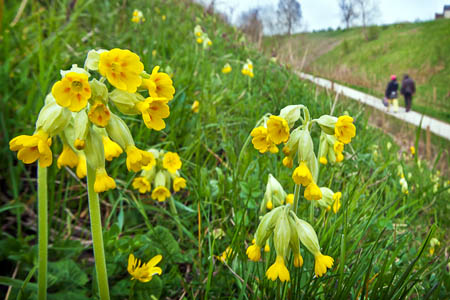Wild flowers are again blooming beside a popular walking and cycling trail, thanks to sheep.
A grant last year enabled the Peak District National Park Authority to introduce sheep grazing to cuttings on the Tissington and High Peak Trails.
The sheep kept down thick grass and brambles beside the former railway lines, which allowed wild flowers to flourish.
The £25,000 cash boost from the SITA Trust enabled the authority to bring in the scheme at Fenny Bentley and Parsley Hay and also to carry out an ecological survey along the whole 21km (13 miles) of the Tissington Trail and 16km (10 miles) of the High Peak Trail.
These findings led to a further £55,000 SITA Trust grant this year to run a ‘cut and collect’ machine that mows grass along the banks and harvests wildflower seeds for sowing elsewhere along the trails.
Native species such as cowslips, ox eye daisy, common spotted and greater butterfly orchids, meadowsweet and field scabious are now adding colour to the White Peak scenery and providing habitats for insects and birds.
National park ecologist Rebekah Newman said: “The trails are a really important part of the ecological network in the White Peak, and there’s no doubt that without SITA Trust we would not have been able to do this work.
“Wild flowers are able to flourish in a way that’s rarely seen in fields any more, and the trails connect a series of wildlife sites together so that all kinds of species have more opportunities to breed.”
Property manager for the trails, Abi Ball, said: “This is the first time we’ve been able to manage these important grassland habitats in such a large-scale way.”
Jools Granville of the SITA Trust said: “We’re delighted to see the ongoing benefits of our funding in the Peak District national park and hope that the many visitors to this incredible trail, both human and animal, enjoy this amazing British landscape.”
SITA Trust provides funding through the Landfill Communities Fund. Funding is available for projects that enhance communities and enrich nature.
